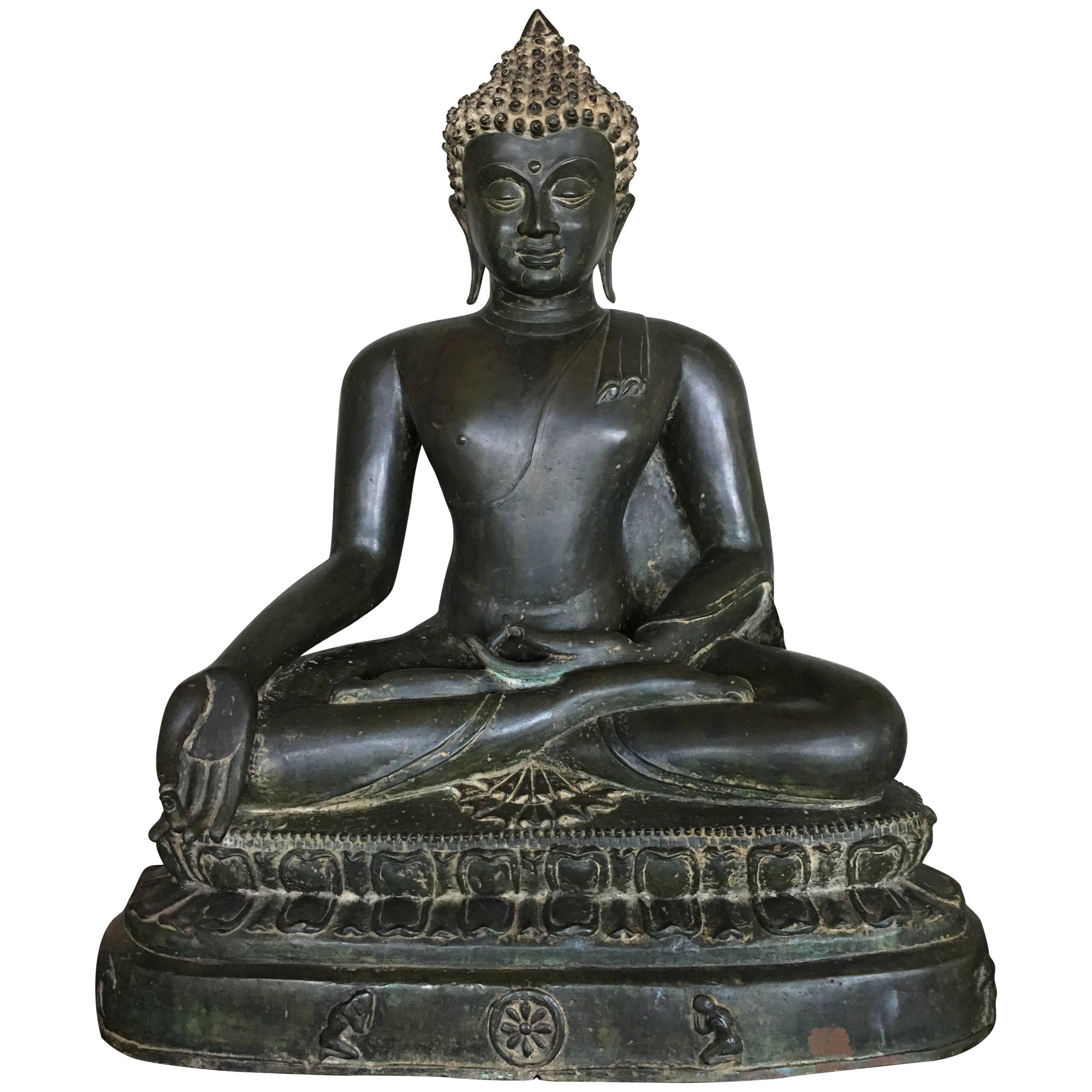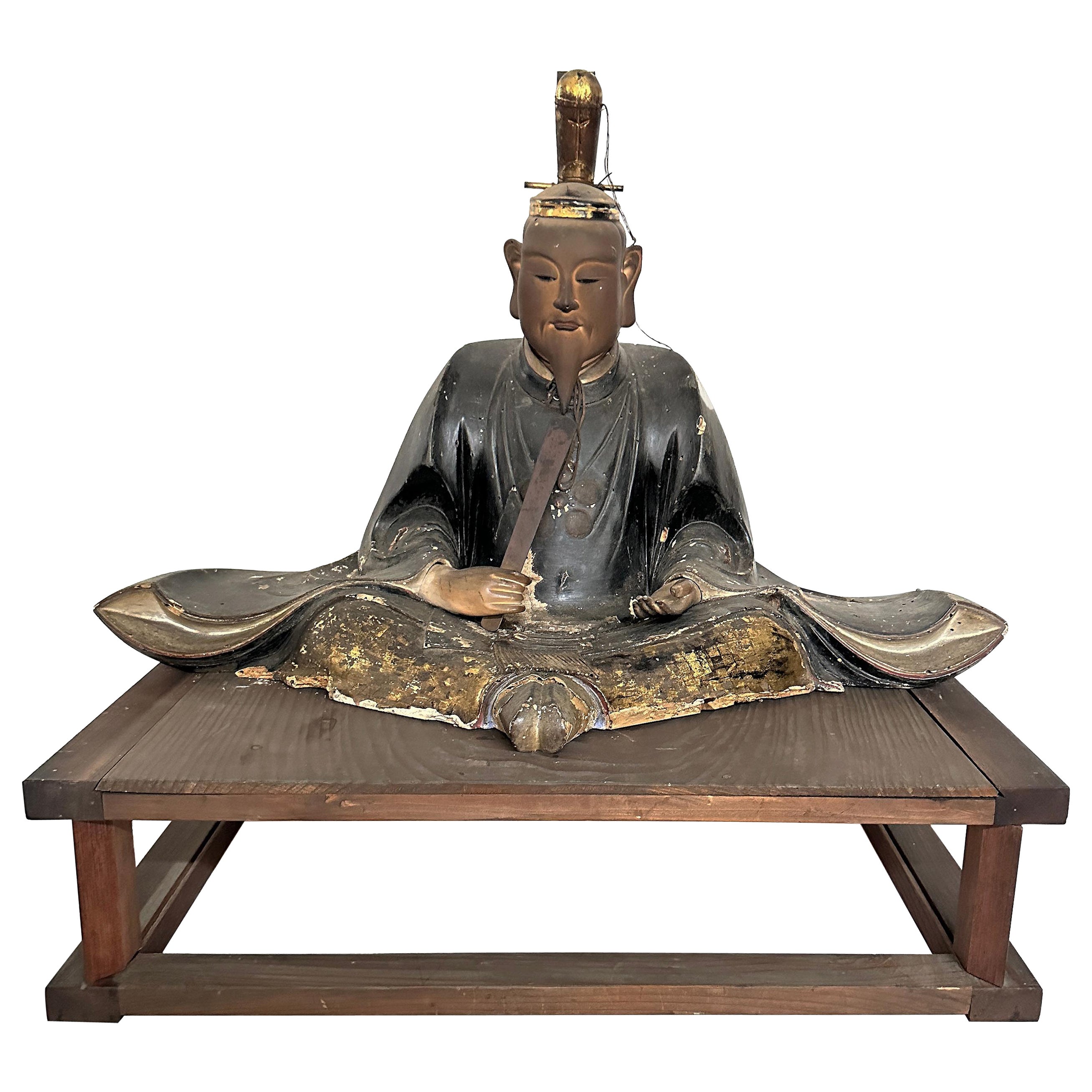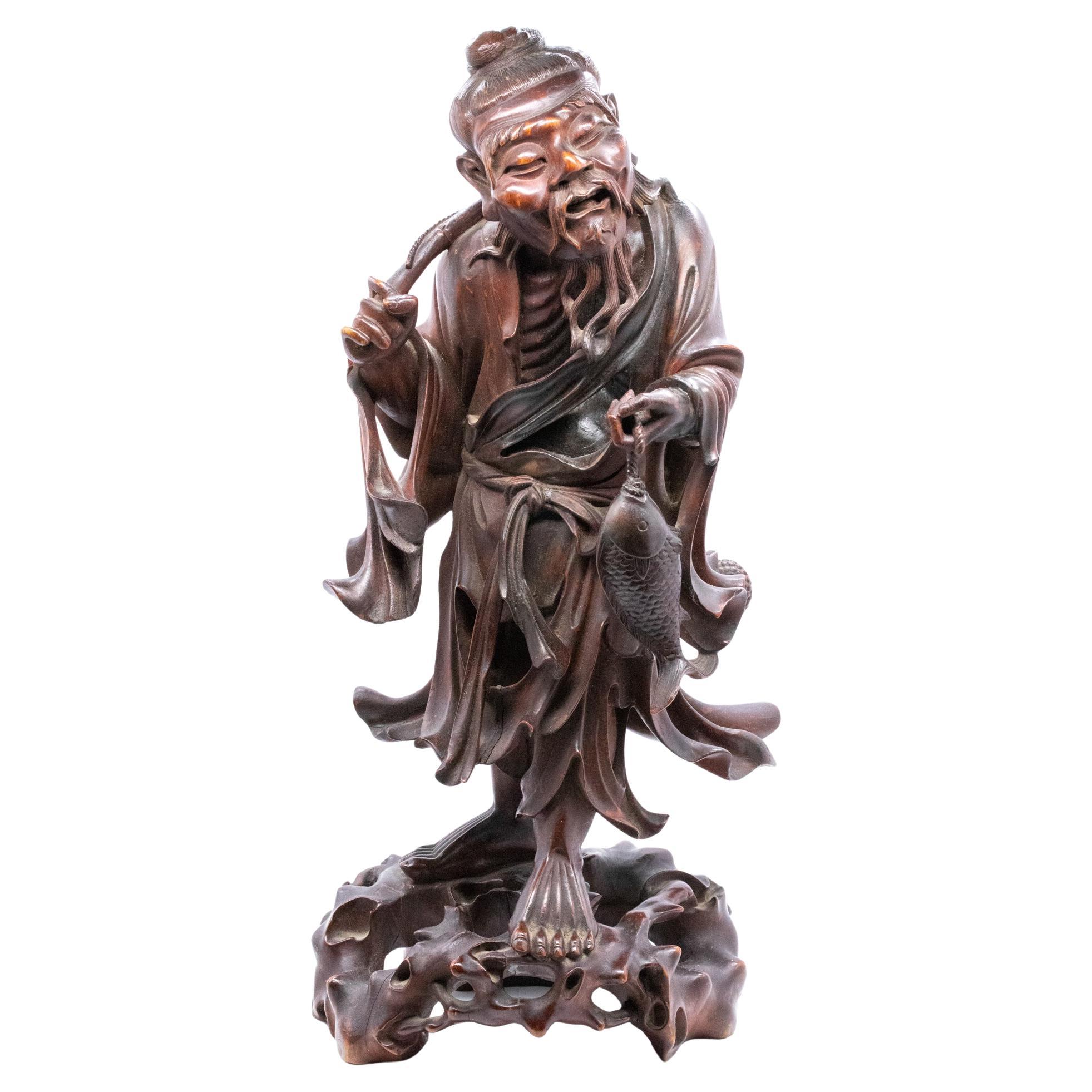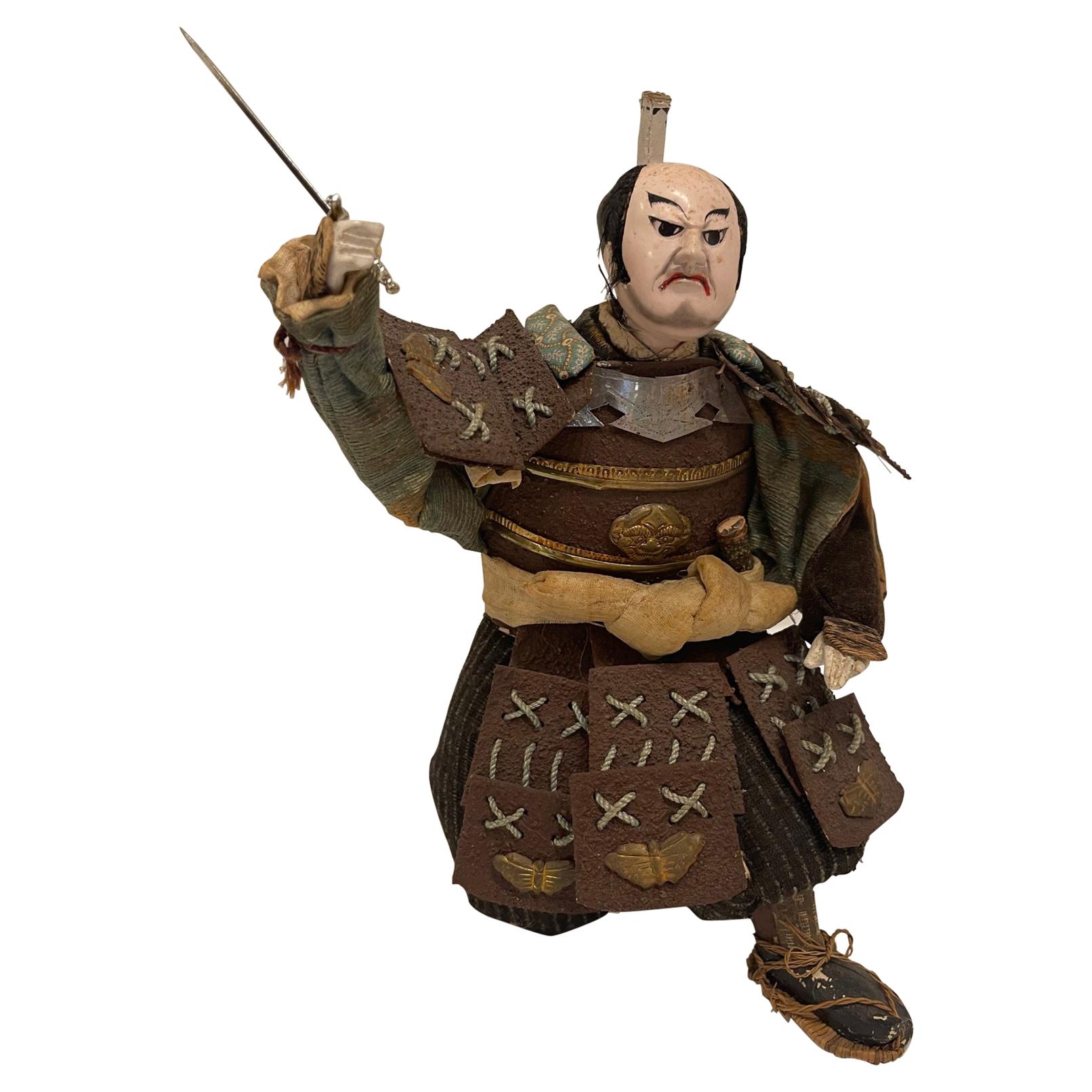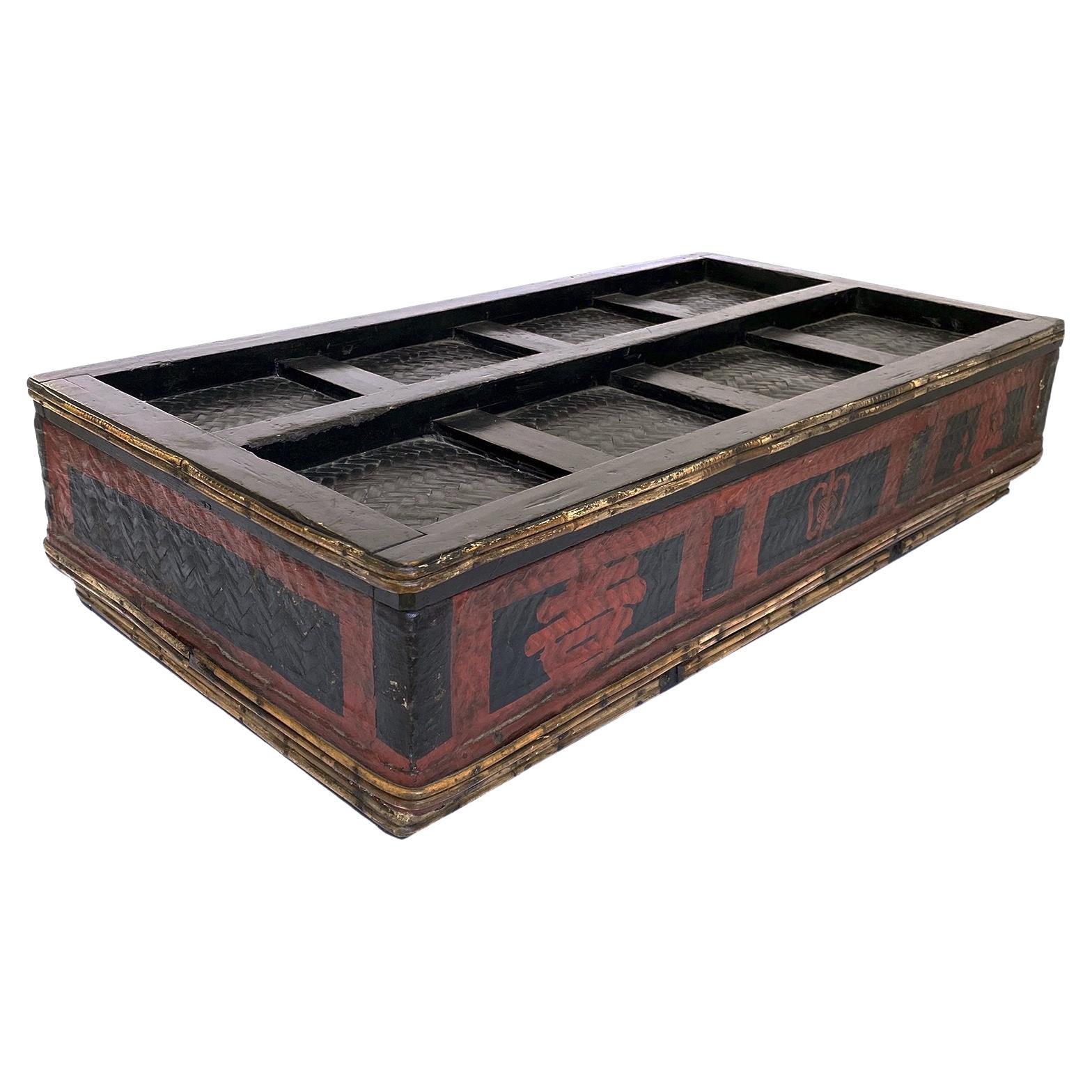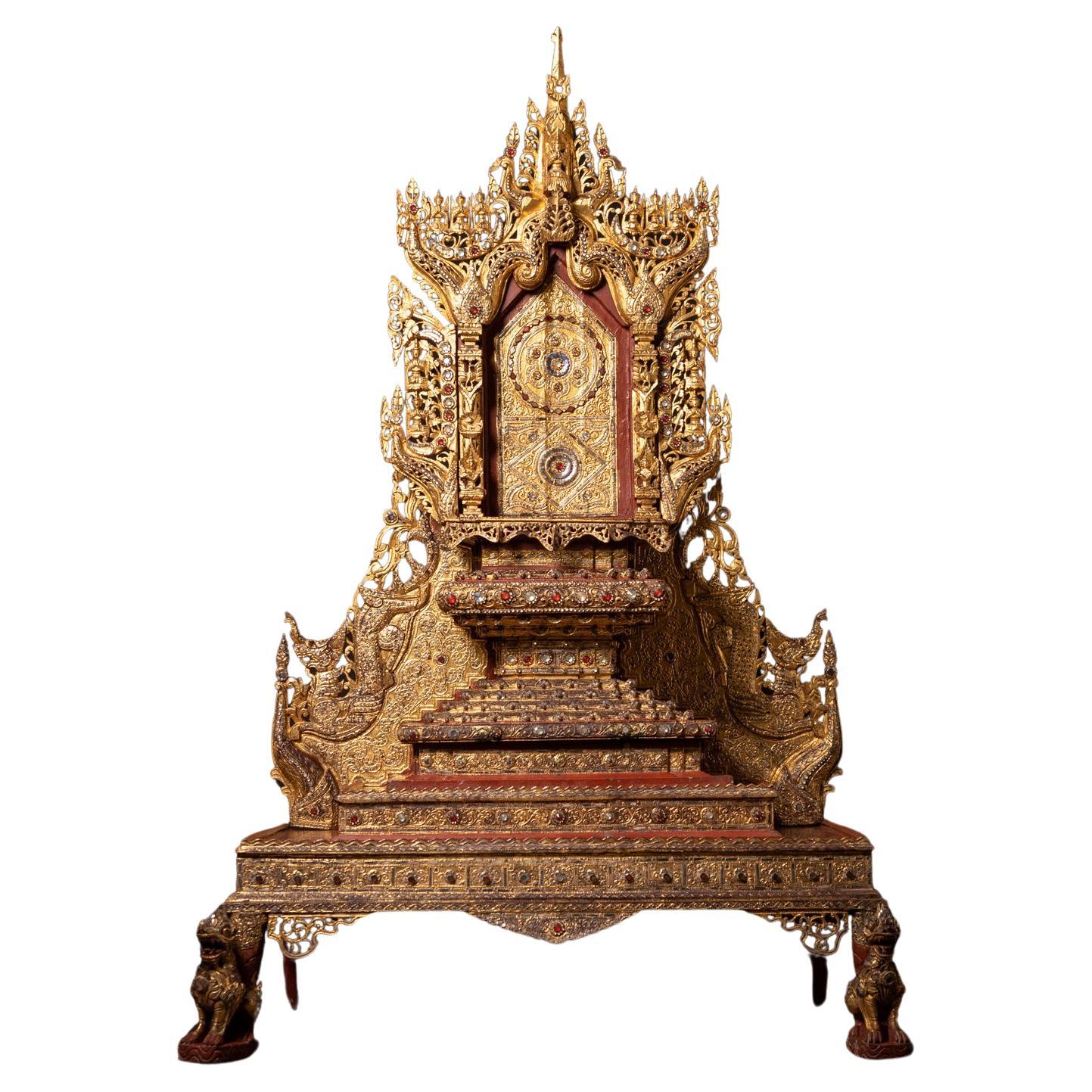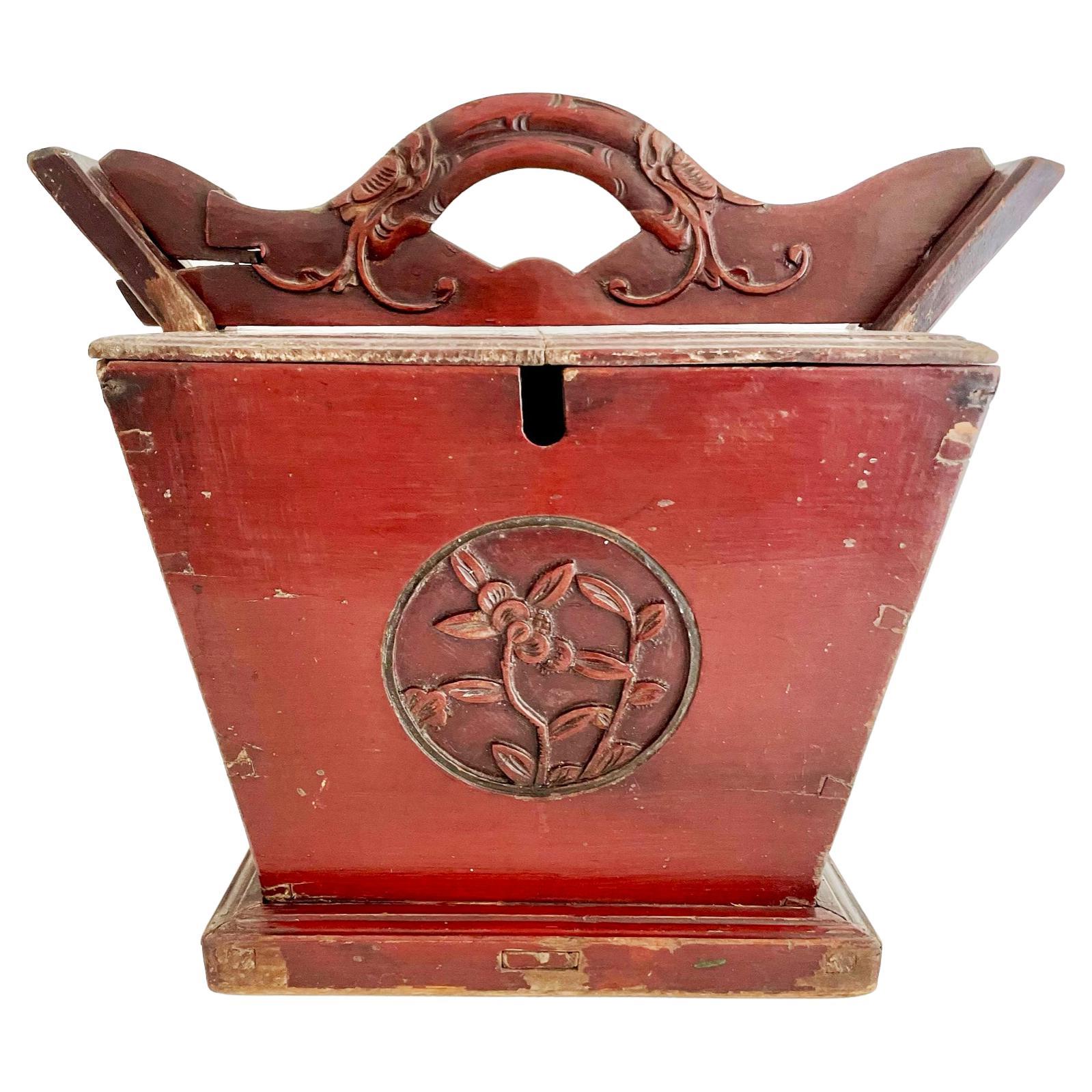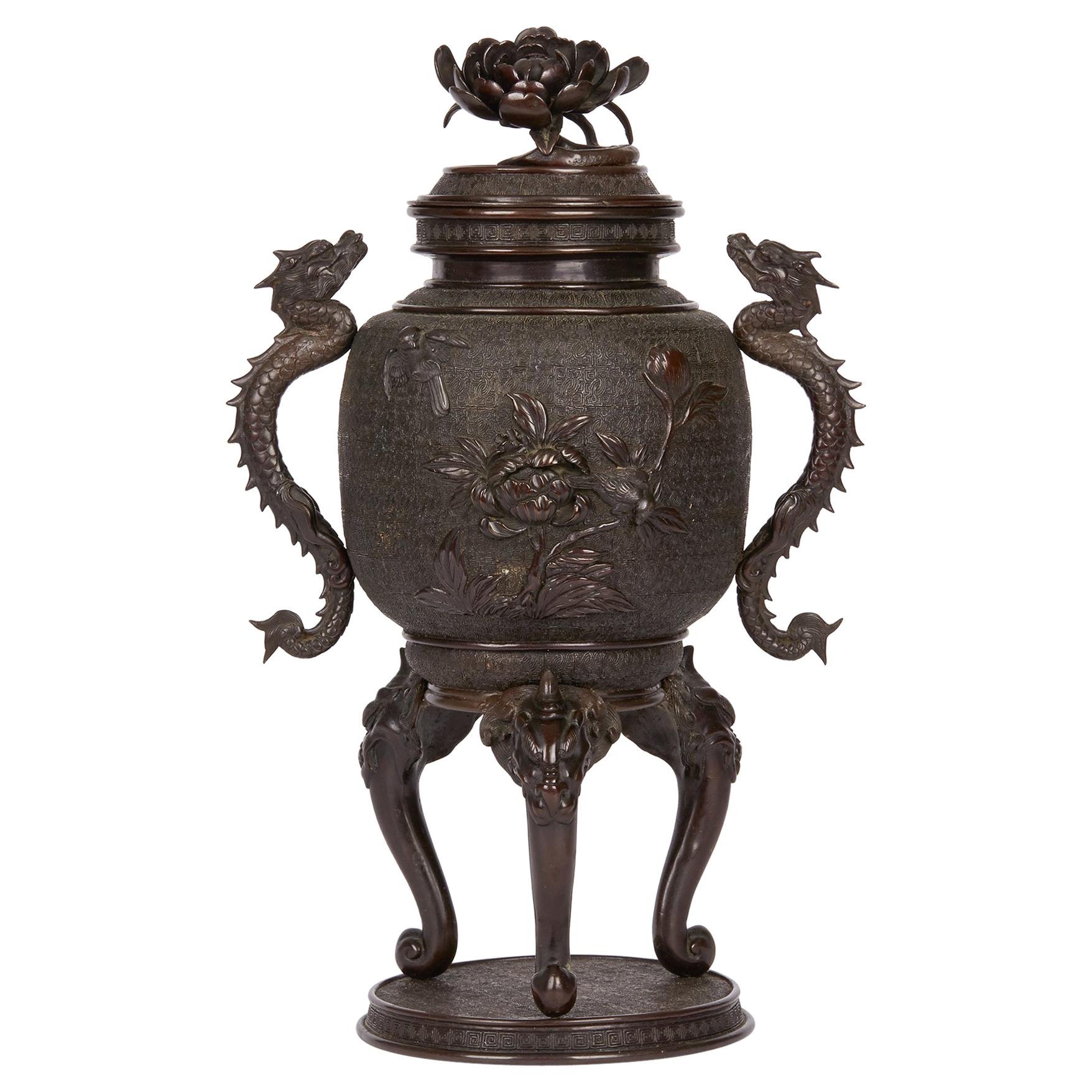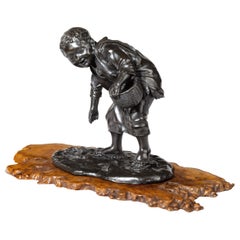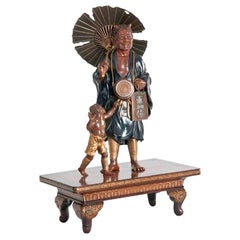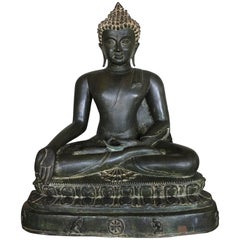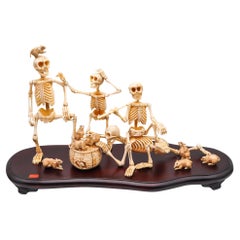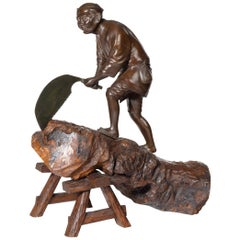
19th Century Meiji Period Bronze of a Woodcutter Sawing a Large Tree Trunk
View Similar Items
Want more images or videos?
Request additional images or videos from the seller
1 of 11
19th Century Meiji Period Bronze of a Woodcutter Sawing a Large Tree Trunk
About the Item
- Dimensions:Height: 17 in (43.18 cm)Width: 13.5 in (34.29 cm)Length: 17 in (43.18 cm)
- Style:Meiji (Of the Period)
- Materials and Techniques:
- Place of Origin:
- Period:
- Date of Manufacture:1880
- Condition:Wear consistent with age and use.
- Seller Location:Lymington, GB
- Reference Number:1stDibs: LU973015872602
About the Seller
5.0
Recognized Seller
These prestigious sellers are industry leaders and represent the highest echelon for item quality and design.
Established in 1982
1stDibs seller since 2013
109 sales on 1stDibs
Typical response time: 1 hour
Associations
LAPADA - The Association of Arts & Antiques Dealers
More From This SellerView All
- 19th Century Meiji Period Bronze of a Boy Collecting Sweet Chestnuts by SeiyaLocated in Lymington, HampshireA charming Meiji period bronze of a boy collecting sweet chestnuts by Seiya, he carries a basket and is looking down at an insect crawling over his hand, he is also evidently wearing...Category
Antique 1880s Japanese Meiji Figurative Sculptures
MaterialsBronze
- Meiji Period Bronze of an Oni Holding a ParasolLocated in Lymington, HampshireThis figural group shows a mendicant Oni with a tattered umbrella and wearing a voluminous shakudo cloak over gilt tiger mask greaves. A smaller Oni wears s...Category
Antique 1890s Japanese Meiji Figurative Sculptures
MaterialsMetal
- Meiji Period Bronze Sculpture of a LabourerLocated in Lymington, HampshireUnusual Meiji period bronze of a labourer sieving through a woven reed mat with another at his feet and a wooden bucket at his side, signed.Category
Antique 1880s Japanese Sculptures and Carvings
MaterialsBronze
- Large and Impressive Meiji Period Bronze Bison by Sano Takachika for the KakuhLocated in Lymington, HampshireA large and impressive Meiji period bronze bison by Sano Takachika for the Kakuha Company, the animal powerfully modelled with his head low and turned slightly to the left and with a...Category
Antique Early 1900s Japanese Meiji Sculptures and Carvings
MaterialsBronze
- Pair of Meiji Period Solid Silver Bowls by EigyokuLocated in Lymington, HampshireA pair of Meiji period solid silver bowls by Eigyoku, each of lobed oval form on four scroll feet, deeply embossed with continuous chrysanthemum hea...Category
Vintage 1910s Japanese Meiji Metalwork
MaterialsSilver
$24,532 / set - Chinese Paktong Basin, 19th CenturyLocated in Lymington, HampshireA Chinese paktong basin, engraved with scenes of many children at play and before pagodas, within borders of shou characters, bats and flowerheads, the flattened rim with vases of flowers and lingzhi, swords, lotus pods...Category
Antique 19th Century Japanese Meiji Metalwork
MaterialsMetal
You May Also Like
- Large Burmese Bronze Medicine Buddha, Pagan Style, Late 19th CenturyLocated in Austin, TXA large and magnificent cast bronze image of the Medicine Buddha, Bhaisajyaguru, rendered in the Burmese Pagan style, and most likely based on a period example that was either damaged or lost, 19th century, Burma or Thailand. He can be identified as the Medicine Buddha by the hand that rests in his lap, with his middle finger touching the thumb. A medicine pot or fruit stem would originally have been placed in his upturned palm. The face of this Buddha has been sculpted masterfully. He has a beautiful heart shaped face topped by hair neatly arranged in the typical "snail shell curls", and surmounted by a high ushnisha. Long, pendulous earlobes frame his face, a symbol of his princely past. He gazes serenely outwards from heavily lidded, downcast eyes, a content smile upon his full, lush lips. The Buddha is portrayed seated in vajrasana (full lotus position), his elegant hands displayed in varada mudra, the gesture of granting favors and fulfilling wishes. Long, exquisite fingers extended, the thumb and middle finger touching in a gesture of compassion. He is clothed in a simple kasaya wrapped around his body and over one shoulder, leaving the shoulder and part of his chest bare. The diaphanous garment clings to his body, outlining his well proportioned and graceful, almost sensuous, form. The excess material pooled in neat pleats in front of him. A sash thrown over his shoulder. He sits upon a double lotus base upon a raised platform. The platform features two kneeling attendants, usually interpreted as the monks Ananda and Kasyapa. Between them is a circular disc representing the Wheel of Dharma. Contained in the disk is a flower with eight petals, symbolizing the eightfold path, one of the principle teachings of the Buddha. The sides and back of the platform featuring a series of singha, or lions, representative of the Buddha's royal past. An applied lacquer patina covers the entirety of the image. Large deposits of ash (from incense) are present between the curls of the hair, as well as some the other crevices, indicating this image was the subject of worship for many years. Bhaisajyaguru, also called the Medicine Buddha, or Buddha of Healing, is a revered figure in the Buddhist pantheon as a master able to cure suffering, both physical and spiritual, through his teachings. The Pagan Empire ruled most of present day Burma (Myanmar) from 849 to 1297. The capital, Bagan, served as a both the center of government and religion, where Buddhism reigned supreme. Bagan was also at a crossroads of the Buddhist world, with influence from India, Nepal, Tibet, China, and even Indonesia shaping their culture. As such, Pagan Buddha...Category
Antique Late 19th Century Burmese Sculptures and Carvings
MaterialsBronze
- Japan 1890 Meiji Period Signed Assembling of Okimono with a Group of SkeletonsLocated in Miami, FLA signed Okimono from the Japanese Meiji period (1868-1912). Very rare, unusual and large sculptural assembling of a dysplaying piece of okimono. Created in Japan during the imperial period of the Meiji (1868-1912). This extraordinary piece okimono sculpture depict a group of four intricately and realistically rendered carousing males skeletons representations (Gaikotsu) standing in several position. One skeleton is crouched down playing with mouses in the floor. The second is seated resting in the other's back, peacefully smoking opium. The others two are fully standing in interacting position. The entire composition is arranged freely displayed on the wood base including a woven basket, apparently with food and four playfull mouses. There are an extra five mouses in different positions, freely playing around, all of them with the eyes accented with carved black ebony. The composition is displayed on a four-legged free form carved wood platform with an inlaid red plaque engraved with the artist's signature. The level of detail and the quality of the carving is truly exceptional. Has an exact measurements of 216.15 mm by 139.7 mm by 359.41 mm (8.51 x 5.5 x 14.15 Inches). After an extensive collection of data, comparables and references to this piece, we have only been able to find only three okimono sculptures like this, with similar themes and the same quality of work. References Note: A similar carving of four skeletons playing an animated game of dominos, signed Shutaro in an inlaid rectangular red plaque, was sold in London by Christie’s South Kensington in October 14 2014, Lot 120 Sale 5546. References Note: A similar carving with four skeletons in an otherwise typical victorian scene of a photographer and three sitters signed Shutaro in an inlaid rectangular red plaque, was sold in Edinburgh at Lyon & Turnbull in November 7, 2018. References Note: A similar carving with five skeletons seated, playing cards and drinking, was sold in London by John Nicholson Fine Art on September 26, 2018. Meiji period, is an era of Japanese history that extended from October 23, 1868 to July 30, 1912.The Meiji era was the first half of the Empire of Japan, when the Japanese people moved from being an isolated feudal society at risk of colonization by Western powers to the new paradigm of a modern, industrialized nation state and emergent great power, influenced by Western scientific, technological, philosophical, political, legal, and aesthetic ideas. As a result of such wholesale adoption of radically different ideas, the changes to Japan were profound, and affected its social structure, internal politics, economy, military, and foreign relations. The period corresponded to the reign of Emperor Meiji. It was preceded by the Keio era and was succeeded by the Taisho era, upon the accession of Emperor Taisho. Okimono, is a Japanese term meaning for display an ornament; art object; or decorative object, usually displayed in a tokonoma or butsudan "Buddhist altar". It is an ornament or figure, especially one placed in a guest room. An okimono may be a small Japanese carving...Category
Antique 1890s Japanese Meiji Sculptures and Carvings
MaterialsWood
- 19th Century Gold Gilded Bronze BuddhaLocated in Vero Beach, FL19th century gold gilded bronze Buddha A finely cast bronze Buddha statue in gold gilt with modeled and incised floral motifs. This jeweled God o...Category
Antique 19th Century Chinese Qing Sculptures and Carvings
MaterialsBronze
- Tenjin-Sama, Wood, Japanese Shinto Deity of Learning and Wisdom, Meiji PeriodLocated in Point Richmond, CATenjin-Sama, Shinto Deity of Learning and Wisdom, Meiji Period Tenjin,-Sama, Deification of Sugawara no Michizane, was a famous scholar, poet and politician of the Heian period. In...Category
Antique Late 19th Century Japanese Meiji Sculptures and Carvings
MaterialsWood
- Large 19th Century Chinese Carved Tea CaddyLocated in Atlanta, GABeautifully carved Qing dynasty tea caddy from Elmwood (yumu), with floral motifs. Beautiful original patina, the body is in a brown lacquer and the handle is finished with an red color lacquer. The large size is very usual and was used in a large family compound. The tea caddy is designed to hold and keep warm, large tea pot filled with tea. The tea pot’s spout comes out the front opening for pouring. The horizontal bar used as the container’s handle has a pivoting lock when open, the handle bar can be removed and closing of the pivoting lock, the handle is secure for use. The wooden tea caddy...Category
Antique Late 19th Century Chinese Sculptures and Carvings
MaterialsElm
- Large 19th Century Chinese Carved Tea CaddyLocated in Atlanta, GABeautifully carved Qing dynasty tea caddy from Elmwood (yumu), with floral motifs and finished with an oxblood color lacquer. The handle has a finely carved bat motif, which symbolizes good fortune. The large size is very usual and was used in a large family compound. The tea caddy is designed to hold and keep warm, large tea pot filled with tea. The tea pot’s spout comes out the front opening for pouring. The horizontal bar used as the container’s handle has a pivoting lock when open, the handle bar can be removed and closing of the pivoting lock, the handle is secure for use. The wooden tea caddy...Category
Antique Late 19th Century Chinese Sculptures and Carvings
MaterialsElm
Recently Viewed
View AllMore Ways To Browse
Wooden Tree Trunk
Antique Japanese Trunk
Antique Wooden Trestles
Antique Japanese Saw
Meiji Bronze Woodcutter
Antique Asian Sculpture
Japanese Hand Carved
Myanmar Furniture
Burma Furniture
Vintage Carving
Japanese Mid Century Wood
Mid Century Wood Carving
Large Wood Carving
Finding Used Furniture
Japanese Wood Crafts
Antique Lifetime Furniture
Old Japanese Vintage
Asian Architecture

